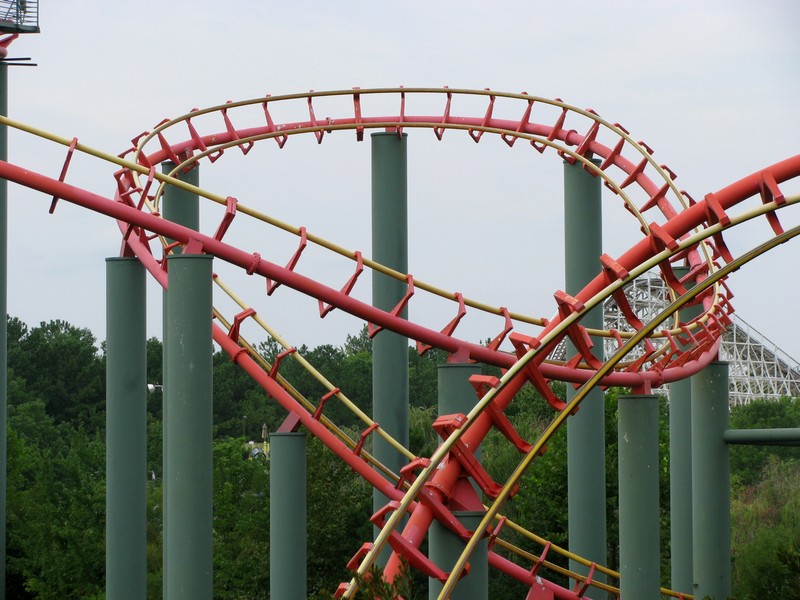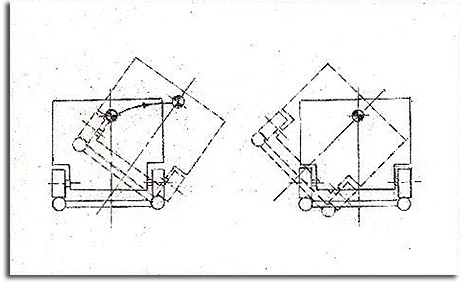^Great comparison. I know they cant both lie in a single plane. They would have some variance throughout the transition, but the
basic movement of the rails is outside moving upwards inside moving in, with slight movement off of those planes to maintain distance.
So looking at 1)

I made the inner rail as straight as i could. So this is what it would look like If the inner rail was straight and the outer rail moved around it.
Instead of moving up almost vertically, notice how the the rail veers over to the right as it rises in order to maintain the distance from the other rail.
2)

This shows what im talking about. Compared to this-

This is probably not a great example, but i think that justifies the 2nd one...





































